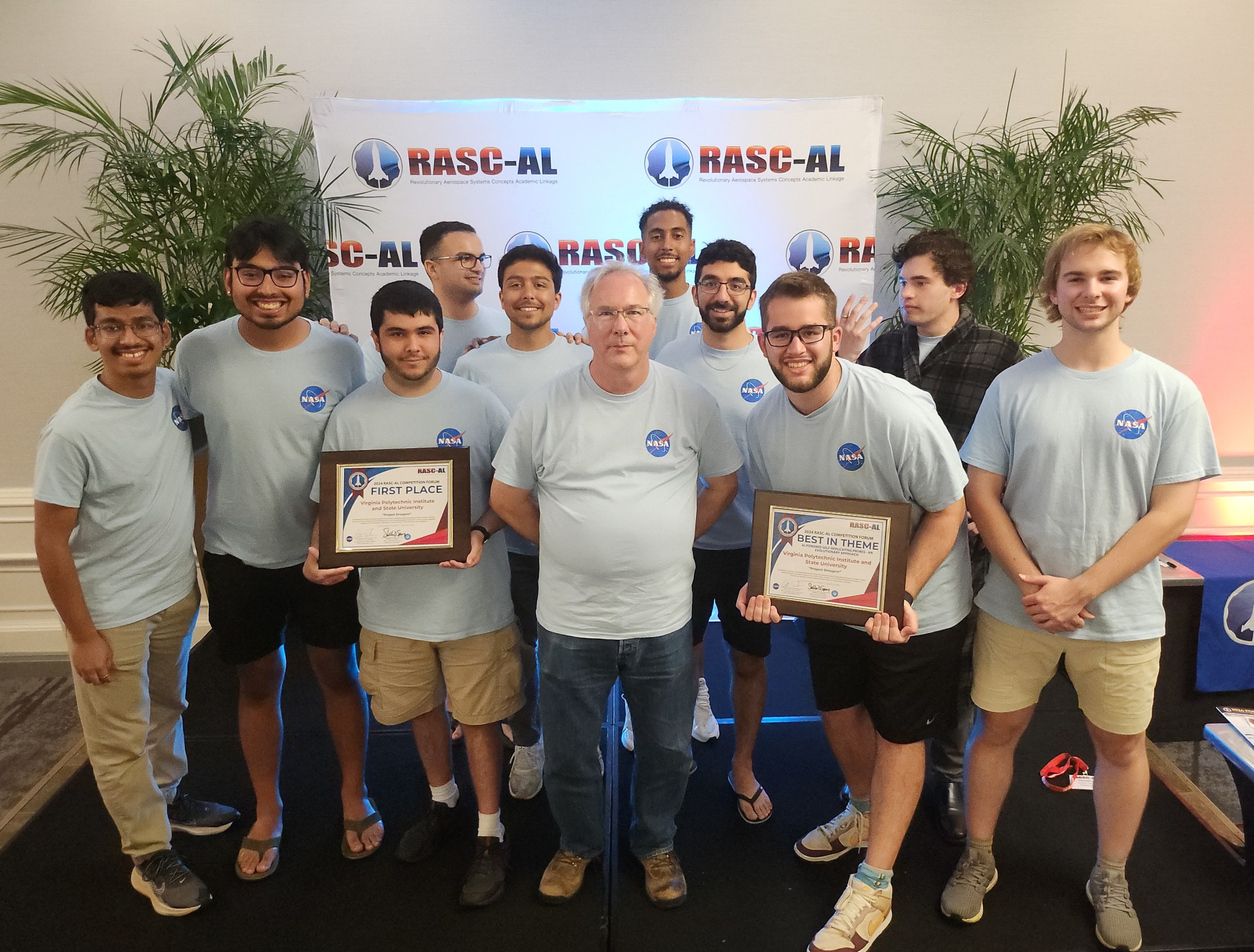NASA’s RASC-AL Competition Selects 2024 Winners
Out of 14 finalist teams that encompassed collegiate and university representation from across the globe, the Virginia Polytechnic Institute and State University team with their concept, “Project Draupnir,” in the AI-Powered Self-Replicating Probe theme, took home top prize in NASA’s Revolutionary Aerospace Systems Concepts – Academic Linkage (RASC-AL) competition. The University of Maryland took second […]

3 min read
Preparations for Next Moonwalk Simulations Underway (and Underwater)
Out of 14 finalist teams that encompassed collegiate and university representation from across the globe, the Virginia Polytechnic Institute and State University team with their concept, “Project Draupnir,” in the AI-Powered Self-Replicating Probe theme, took home top prize in NASA’s Revolutionary Aerospace Systems Concepts – Academic Linkage (RASC-AL) competition.
The University of Maryland took second place overall for their concept, “SITIS: Subsurface Ice and Terrain In-situ Surveyor,” while South Dakota State University took third place overall with “POSEID-N: Prospecting Observation System for Exploration, Investigation, Discovery, and Navigation,” both in the Large-Scale Lunar Crater Prospector theme.
The first and second place overall winning teams will receive a travel stipend to present their work at the 2024 AIAA Accelerating Space Commerce, Exploration, and New Discovery (ASCEND) Conference in Las Vegas, Nevada in July.
In its 23rd year, RASC-AL is one of NASA’s longest running higher education competitions.
“It’s an engaging engineering design challenge that fosters collaboration, innovation, and hard work. Finalist teams also enjoy the comradery and networking opportunities at our annual forum in Cocoa Beach, Florida,” said Pat Troutman, program assistant, technical for NASA’s Strategy and Architecture Office. “Each year, the competition grows as more and more students want to contribute to NASA’s mission of improving humanity’s ability to operate on the Moon, Mars and beyond.”
The forum is attended by NASA and industry subject matter experts who judge the presentations and offer valuable feedback. New this year, RASC-AL teams based in the United States were encouraged to work with universities from countries that have signed The Artemis Accords – a set of principles designed to guide civil space exploration and use in the 21st century.
Finalist teams responded to one of four themes, ranging from developing large-scale lunar surface architectures enabling long-term off-world habitation, to designing new systems that leverage in-situ resources for in-space travel and exploration.
Additional 2024 Forum awards include:
Best in Theme:
- AI-Powered Self-Replicating Probes – an Evolutionary Approach: Virginia Polytechnic Institute and State University, “Project Draupnir”
- Large-Scale Lunar Crater Prospector: University of Maryland, “SITIS: Subsurface Ice and Terrain In-situ Surveyor”
- Sustained Lunar Evolution: University of Puerto Rico, Mayaguez, “Permanent Outpost Lunar Architecture for Research and Innovative Services (POLARIS)”
- Long Duration Mars Simulation at the Moon: Massachusetts Institute of Technology (MIT) with École Polytechnique Fédérale de Lausanne (EPFL) and the National Higher French Institute of Aeronautics and Space (ISAE-SUPAERO), “MARTEMIS: Mars Architecture Research using Taguchi Experiments on the Moon with International Solidarity”
Other Awards:
- Best Prototype: South Dakota State University, “POSEID-N: Prospecting Observation System for Exploration, Investigation, Discovery, and Navigation”
RASC-AL is open to undergraduate and graduate students studying disciplines related to human exploration, including aerospace, bio-medical, electrical, and mechanical engineering, and life, physical, and computer sciences. RASC-AL projects allow students to incorporate their coursework into space exploration objectives in a team environment and help bridge strategic knowledge gaps associated with NASA’s vision. Students have the opportunity to interact with NASA officials and industry experts and develop relationships that could lead to participation in other NASA student research programs.
RASC-AL is sponsored by the Strategies and Architectures Office within the Exploration Systems Development Mission Directorate at NASA Headquarters, and by the Space Mission Analysis Branch within the Systems Analysis and Concepts Directorate at NASA Langley. It is administered by the National Institute of Aerospace.
For more information about the RASC-AL competition, including complete theme and submission guidelines, visit: http://rascal.nianet.org.
Share
Details
Related Terms
What's Your Reaction?















































